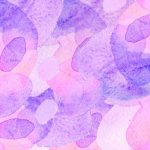Are you tired of having to rewash your clothes because stains just won’t come out? Do you find yourself wondering what exactly that stubborn mark on your shirt is? Look no further, because in this article we’ll be discussing what laundry detergent stains look like.
From grease and oil to protein-based stains, every type of stain has its own unique appearance. By understanding what these stains look like, you’ll be better equipped to treat them properly and keep your clothes looking fresh and clean.
So, let’s dive in and explore the different types of laundry detergent stains and how to identify them.
Table of Contents
Grease and Oil Stains
So, you’ve got some grease or oil stains on your clothes? Don’t worry, it happens to the best of us! These types of stains can be frustrating to deal with, but with a little know-how, you can get rid of them in no time.
In this discussion, we’ll cover the appearance of grease and oil stains on clothes, common causes of these stains, and some handy tips for removing them.
Appearance on Clothes
You’ll notice that your clothes have splotchy discolorations, often in the form of blotchy circles or streaks, when they’ve been stained by laundry detergent. These stains can vary in size and color depending on the type of detergent used and how long the fabric was exposed to it.
Some common colors of detergent stains include blue, green, and pink. In addition to discoloration, detergent stains can also cause fabric to become stiff or rough to the touch. This is because the detergent residue can build up and create a barrier between the fibers of the fabric.
If left untreated, these stains can become more difficult to remove over time. That’s why it’s important to always follow the care instructions on your clothing and to treat any stains as soon as possible.
Common Causes
One of the most common culprits behind discolored and stiff clothing is the residue left behind by laundry detergent. This residue can build up over time and create unsightly stains on your clothes. One of the main causes of this buildup is using too much detergent or not rinsing your clothes thoroughly enough.
Another common cause of laundry detergent stains is using the wrong type of detergent for your clothing. Some detergents contain harsh chemicals that can damage certain fabrics, leaving behind stains and discoloration. It’s important to read the labels on your detergent and choose one that is appropriate for your clothing.
By taking these simple steps, you can prevent laundry detergent stains and keep your clothes looking fresh and new.
Tips for Removal
To get rid of discoloration and stiffness caused by laundry detergent residue, try using white vinegar as a natural alternative. Simply add a cup of white vinegar to your washing machine during the rinse cycle to help break down the soap buildup. Not only will this help remove the stains, but it’ll also leave your clothes feeling softer and fresher.
Here are some additional tips for removing laundry detergent stains from your clothes:
-
Use a stain remover: There are many stain removers on the market that can help remove stubborn detergent stains. Look for a product that’s specifically designed for laundry detergent stains.
-
Soak the garment: If the stain is particularly stubborn, try soaking the garment in a solution of white vinegar and water before washing it.
-
Use a laundry booster: Adding a laundry booster to your washing machine can help break down the detergent residue and remove stains.
-
Follow the instructions: Always follow the instructions on the label of your laundry detergent and any stain removers or boosters you use. Using too much detergent or not using enough water can contribute to the problem of detergent stains.
Protein-Based Stains
When it comes to protein-based stains on your clothes, they can be tricky to remove. These types of stains can come from a variety of sources, including blood, sweat, and food.
To get rid of these stains, you’ll need to act quickly and use the right techniques. Adjust the paragraph structure in the Input to logically group complete sentences on their own lines, with a double new line after. Use contractions.
Appearance on Clothes
Laundry detergent stains can leave unsightly marks on your clothes, making them look dull and discolored. When it comes to appearance, these stains can vary in size and shape depending on the amount of detergent used and the type of fabric it comes into contact with. Here are some common characteristics of laundry detergent stains that you should look out for:
- They can appear as blotchy spots or streaks on your clothes.
- They’re often white or light in color, but can also be yellow or brown depending on the type of detergent used.
- The stains can be difficult to remove, especially if they’ve been left untreated for a long period of time.
If you notice any of these characteristics on your clothes, it’s important to act fast and treat the stain as soon as possible. Don’t let laundry detergent stains ruin your favorite clothes – with the right treatment, you can get them looking as good as new!
Common Causes
You may be surprised to learn that there are numerous causes for those frustrating marks on your clothes that seem to never come out. One of the most common causes is hard water, which is water that contains high levels of minerals such as calcium and magnesium. When hard water is used to wash clothes, it can leave behind white, chalky stains on the fabric.
Additionally, overloading the washing machine can cause detergent stains. When too much laundry detergent is used or the washing machine is overcrowded, the detergent may not dissolve properly and can leave behind unsightly marks on the clothes.
Another common cause of laundry detergent stains is using too much fabric softener or dryer sheets. These products can leave behind oily stains on the fabric that are difficult to remove.
In some cases, the type of fabric can also affect how laundry detergent stains appear on clothes. For example, synthetic fabrics like polyester and nylon are more likely to hold onto detergent stains than natural fabrics like cotton or linen.
Overall, understanding the common causes of laundry detergent stains can help you take preventative measures to avoid them and keep your clothes looking their best.
Tips for Removal
Knowing how to remove stubborn laundry stains can save you time and money in the long run, especially if you have a favorite piece of clothing that you want to keep looking pristine. Here are four tips for removing laundry detergent stains from your clothes:
-
Act fast: The sooner you treat the stain, the better your chances of removing it completely. Don’t let the stain sit for too long before taking action.
-
Rinse with cold water: Rinse the stained area with cold water to remove as much of the detergent as possible. Avoid using hot water, as it can set the stain and make it more difficult to remove.
-
Use a stain remover: Apply a stain remover to the stained area, following the product’s instructions. Be sure to test the product on an inconspicuous area first to make sure it doesn’t damage the fabric.
-
Wash as usual: Once you’ve treated the stain, wash the garment as usual. Check the stain before putting it in the dryer, as heat can set a stain and make it more difficult to remove. Repeat the process if necessary until the stain is completely gone.
Tannin Stains
When it comes to tannin stains, you may notice a brownish or yellowish discoloration on your clothes. These stains are caused by substances like tea, coffee, wine, and fruit juices.
To remove tannin stains, try using a mixture of vinegar and water or a laundry detergent with enzymes.
Appearance on Clothes
Take a look at your clothes after using laundry detergent – can you spot any visible stains or discoloration? Laundry detergent stains can appear in a variety of ways, and it’s important to know what to look for so you can effectively treat them.
Here are a few common appearances of laundry detergent stains on clothes:
-
White residue: This is often caused by using too much detergent or not rinsing clothes thoroughly. The excess detergent can leave a white residue on clothes, which can be especially noticeable on dark fabrics.
-
Bleach spots: If you accidentally spill bleach on your clothes, you’ll likely notice white or light-colored spots where the bleach has removed the dye. These spots can be difficult to remove, so it’s important to act quickly if you notice them.
-
Discoloration: Some detergents can cause discoloration on clothes, particularly on dark fabrics. This can appear as a faded area or a lighter patch on the fabric.
-
Streaks: If you poured detergent directly onto clothes or didn’t distribute it evenly in the washing machine, you may notice streaks or lines of detergent on the fabric. These can be especially noticeable on dark fabrics.
By knowing what to look for, you can effectively treat laundry detergent stains and keep your clothes looking clean and fresh.
Common Causes
It’s astounding how a simple mistake like using too much detergent or not rinsing clothes properly can lead to white residue or discoloration on your favorite clothes.
The most common causes of laundry detergent stains include using too much detergent, not using the right amount of water, and not properly rinsing clothes.
When you use too much detergent, it can leave a buildup on your clothes that causes them to look dull or discolored. This is especially true if you have hard water, which can make it even harder for your detergent to rinse away completely.
Similarly, if you don’t use enough water, your clothes won’t be able to rinse properly, which can also lead to discoloration or residue. To avoid these issues, be sure to follow the instructions on your detergent bottle and use the recommended amount for your load size.
Additionally, make sure you’re using enough water to fully rinse your clothes.
Tips for Removal
Now that you know the common causes of laundry detergent stains, it’s time to learn how to remove them. Don’t worry, it’s not as daunting as it may seem. With a few simple tips, you can get your clothes looking clean and fresh again in no time.
First, start by identifying the type of stain and the fabric it’s on. This will help you determine the best course of action.
Then, follow these three easy steps to remove laundry detergent stains:
- Treat the stain as soon as possible. The longer it sits, the harder it’ll be to remove.
- Use a stain remover or pre-treat the stain with a solution of equal parts water and vinegar.
- Wash the garment in the hottest water recommended for the fabric type and add a laundry booster, such as baking soda or borax, to the wash cycle.
By following these tips, you’ll be able to tackle even the toughest laundry detergent stains with confidence. Say goodbye to unsightly stains and hello to fresh, clean clothes!
Enzyme-Based Stains
If you’re dealing with enzyme-based stains on your clothes, you may notice a discoloration or darkening in the affected area. These types of stains are typically caused by biological substances such as blood, sweat, and food.
To effectively remove enzyme-based stains, it’s important to act quickly and use the proper cleaning products, such as enzyme-based cleaners or a mixture of vinegar and baking soda.
Appearance on Clothes
Laundry detergent stains can leave unsightly marks on your clothes, making them appear dingy and discolored. These stains can take on a variety of appearances depending on the type of detergent used, the amount of detergent used, and the type of fabric being washed.
To help you identify what laundry detergent stains look like, here is a table outlining some common types of stains and their appearance on clothes:
| Type of Stain | Appearance |
|---|---|
| Grass | Green or yellowish |
| Blood | Red or brown |
| Oil | Greasy or translucent |
| Ink | Dark or black |
| Wine | Red or purple |
By being able to identify the type of stain, you can choose the best course of action for removing it. No one wants to walk around with dingy, discolored clothes, so knowing how to properly remove laundry detergent stains is key to keeping your wardrobe looking fresh and clean.
Common Causes
Identifying the common causes of unsightly stains on clothes is crucial to maintaining a fresh and clean wardrobe. One of the most common culprits is food stains. Whether it’s a splash of tomato sauce or a smudge of chocolate, food stains can be stubborn and difficult to remove. To prevent these types of stains, it’s important to be mindful when eating and to use a napkin or bib to protect your clothing.
Another common cause of laundry detergent stains is sweat. Sweat stains can be yellow or brown in color and are often found in the underarm area of shirts. To prevent these stains, it’s important to wear breathable fabrics and to avoid using too much antiperspirant. If you do find yourself with sweat stains, try using a pre-treatment product before washing.
By identifying the common causes of laundry detergent stains, you can take steps to prevent them and keep your clothes looking fresh and clean.
Tips for Removal
To easily get rid of unsightly stains on your clothes, try using common household items like vinegar, baking soda, or lemon juice. These items are great for removing laundry detergent stains.
Vinegar is a natural acid that can break down the detergent and lift it from the fabric. Simply mix equal parts of vinegar and water and soak the stained area for 30 minutes before washing as usual.
Baking soda is another effective option as it can neutralize the alkaline detergent and help lift the stain. Make a paste by mixing baking soda with a small amount of water and apply it to the stain. Let it sit for 30 minutes before washing as usual.
Lemon juice is also a great option for removing laundry detergent stains. Its acidic properties can help dissolve the detergent and brighten the fabric. Simply apply lemon juice to the affected area and let it sit for 15-30 minutes before washing as usual.
Another tip to keep in mind is to always check the care label on your clothes and follow the manufacturer’s instructions for stain removal. With these simple tips and household items, you can easily get rid of laundry detergent stains and keep your clothes looking their best.
Combination Stains
Hey, have you ever mixed colors and whites in the wash and ended up with those frustrating combination stains that look like a mishmash of colors on your clothes? It’s a common laundry mistake, but it can be easily prevented.
If you do end up with combination stains, it’s important to know what they look like so you can treat them properly. Combination stains can look different depending on the colors that were mixed. They can be blotchy, streaky, or even speckled. They may also have a faded appearance or be darker in some areas than others. These stains can be caused by the dye in one garment bleeding onto another, or by the transfer of colored fibers.
Regardless of the cause, it’s important to address these stains quickly to prevent them from setting in. To remove combination stains, start by pre-treating the affected areas with a stain remover. You can also try using a color-safe bleach or soaking the garment in a mixture of water and vinegar. Once the stain has been treated, wash the garment in cold water to prevent further bleeding and fading.
It’s important to separate your colors and whites in future washes to prevent combination stains from happening again. With a little bit of caution and attention, you can keep your clothes looking bright and stain-free.
- Can You Get Organza Wet? - April 23, 2024
- Why Is Organza so Popular? - April 23, 2024
- What Do You Wear With Organza? - April 23, 2024






